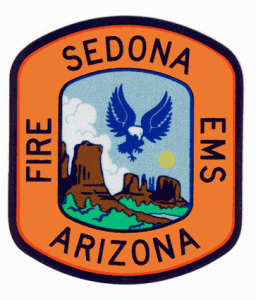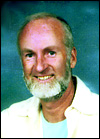Sedona AZ (May 15, 2010) – In response to the recent article by Mr. Robert Wood, published in the Sedona Times newspaper, entitled “Sedona Fire Department Expenditure Controversy” the SFD staff wish to present the following rebuttal in an attempt to correct the misinformation asserted within that document, and provide the facts that were omitted or misrepresented:
First, Mr. Wood states that the biggest item on his tax bill is for fire protection, concluding that his taxes to support fire protection are too high considering that there is only one house fire per month in Sedona. First off, if that’s your house on fire, you’re probably hoping someone capable of putting it out comes quickly. And secondly, while fire protection is certainly something the Sedona Fire District provides, and fifty years ago the Sedona Fire District was formed to respond to and extinguish fires, the scope of practice for SFD, like all other fire service organizations, has expanded considerably over the years. Fire district taxes cover not just fire protection but a broad spectrum of other emergency services which are necessary to meet the needs and demands of what has become a very diverse and discriminating community.
This expansion of SFD’s capabilities from just “fire protection,” has evolved to include Wildfire and Urban-Interface firefighting techniques, Emergency Medical Service and Emergency Medical Transport (which accounts for over 80% of requests for service), Technical Rescue (including the rescue disciplines of rope, swift-water, confined space, tower, trench, structure collapse, hazardous materials, and helicopter short-haul techniques). Again, services mandated and/or requested based on the needs of the demographic we serve.
Other forms of services that may not be as visible, but are certainly well ingrained in a professional fire service organization include the functions of Fire Prevention and Public Safety Programs, which are designed to diminish the need for the emergency services outlined above. Thus, SFD employs a designated Fire Marshall and staff, to enforce a publically adopted Fire Code, and to conduct routine and periodic inspections of public occupancies in manner to provide the community with a reduced level of risk from fires or other hazards. This “Community Risk Management” division of SFD also collaborates with other organizations within the community to present public education programs or safety seminars, which have also been proven to be effective at reducing the potential for fires, accidents, or injuries within the greater Sedona region.
SFD is also very unique, to operate its own 911 Dispatch Center. This evolved from the fact that there was no other organization in the region, during the formation of the district, to provide this service. In Sedona, unlike many other areas of the country, when you dial 911, your call is first answered by an SFD dispatcher, who can immediately notify the proper responders of a medical, rescue, or fire emergency. In the case of a police matter, the call is promptly transferred to the appropriate agency. This is completely opposite of what most other communities across the country receive. Typically, 911 is answered by police dispatchers first, who then transfer calls for medical emergencies, rescues, and fires. Such systems typically take longer to notify fire and medical responders, which delays the response for such calls. Fortunately, this is not what the Sedona region has come to enjoy. This regional 911 system has also become a non-tax source of revenue generation for SFD. This revenue serves to offset the amount paid by taxes.
Additionally, unlike many other “fire protection” organizations, SFD offers a “Fire Based” Emergency Medical Response and Transport Service. The benefit to SFD taxpayers is that ambulance services are prompt and reliable and are operated by well trained and experienced staff. Additionally, while SFD does bill for an ambulance transport, it only bills a resident’s health insurance carrier. If a resident’s coverage only allows for 80% of the cost of such service, then SFD accepts this portion, and does not seek the balance from the resident by further billing for the difference. If a resident does not have insurance that covers ambulance transportation, they do not pay anything for this service. SFD views the taxes paid by the resident as their portion of this service.
Mr. Wood then goes on to assert that while SFD’s portion of our resident’s property tax bill is 26%, it should be only 6%; that the 6% figure is “typical” and SFD’s 26% is “almost five times what it should be.” It turns out the percentage of fire district taxes to total tax bills in Montezuma Rimrock, Camp Verde, Cornville, Clarkdale, Mayer, and Highlands, our closest surrounding Fire Districts, averaged 30% of their total tax bills, compared to Sedona’s 24%. No fire districts were below 19%, let alone remotely close to the 6% cited as “typical” by Mr. Wood. The following were actual percentages based on a $200,000 residential property:
Percentage of Fire District Taxes compared to total Property Taxes:
| Sedona | 24% |
| Montezuma Rimrock | 30% |
| Camp Verde | 28% |
| Cornville | 23% |
| Clarkdale | 19% |
| Mayer | 36% |
| Highlands | 41% |
Mr. Wood also cites that SFD’s per capita cost is $760 compared to Flagstaff’s $179. First I will address the flawed comparison between Flagstaff Municipal Fire Department and Sedona Fire District; then I will address the per capita cost issue.
 The $10 million annual budget figure cited for Flagstaff Fire Dept is only 62% of the total costs for Fire and EMS services in the City of Flagstaff. Because Flagstaff is a municipal fire department many of its costs are not reflected in the fire department’s annual operating budget, as it has the support of general government services that are part of the municipal structure, but paid for out of other departments. These expenses include IT services, finance and budget services, facilities expenses, fleet maintenance, city manager’s office, human resources, etc. Because a fire district is its own self-contained governmental entity, it must maintain all of its own administrative and other services as costs that are part of the overall district budget. Additionally, capital outlay for a municipality is typically funded in a separate CIP, again, not part of individual department’s line item budget but rather captured within a city-wide capital expenditure program. The following is the actual comparison between the 2009-2010 budgets for Flagstaff Fire Department and the Sedona Fire District. All told, the City of Flagstaff Fire Dept total costs for Fiscal Year 2009-2010 were $16,646,662 and the Sedona Fire District’s total costs were $15,174,838. Additionally the entire $16.6 million for Flagstaff was general funded, supported through taxes. The SFD tax supported portion was only $12.4 million; the non-tax supported revenue (ambulance billing, dispatch and telecom contract revenue, tower rents, etc.) was $2.7 million. These revenue streams do not exist for Flagstaff Fire Dept.
The $10 million annual budget figure cited for Flagstaff Fire Dept is only 62% of the total costs for Fire and EMS services in the City of Flagstaff. Because Flagstaff is a municipal fire department many of its costs are not reflected in the fire department’s annual operating budget, as it has the support of general government services that are part of the municipal structure, but paid for out of other departments. These expenses include IT services, finance and budget services, facilities expenses, fleet maintenance, city manager’s office, human resources, etc. Because a fire district is its own self-contained governmental entity, it must maintain all of its own administrative and other services as costs that are part of the overall district budget. Additionally, capital outlay for a municipality is typically funded in a separate CIP, again, not part of individual department’s line item budget but rather captured within a city-wide capital expenditure program. The following is the actual comparison between the 2009-2010 budgets for Flagstaff Fire Department and the Sedona Fire District. All told, the City of Flagstaff Fire Dept total costs for Fiscal Year 2009-2010 were $16,646,662 and the Sedona Fire District’s total costs were $15,174,838. Additionally the entire $16.6 million for Flagstaff was general funded, supported through taxes. The SFD tax supported portion was only $12.4 million; the non-tax supported revenue (ambulance billing, dispatch and telecom contract revenue, tower rents, etc.) was $2.7 million. These revenue streams do not exist for Flagstaff Fire Dept.
| City of Flagstaff Fire Fiscal Year 2010 Budget | Sedona Fire District Fiscal Year 2010 Budget | ||
| $10,251,298 | Operations Fire and On-Scene EMS (Ambu transport provided by private sector | $8,086,749 | Operations Fire, Ems and Medical Transport |
| $2,295,284 | Capital Outlay | $2,489,530 | Capital Outlay |
| $2,174,290 | Regional Communications (9-1-1 Dispatch) | $1,210,204 | Regional Communications (9-1-1 Dispatch) |
| $1,925,790 | Fleet, Facilities, Finance, City Manager’s Office, Human Resources, etc. | $3,388,355 | Admin, Finance, Ambulance Billing, Telecom, Fleet, IT |
| $16,646,662 | Total Fire Dept Costs | $15,174,838 | Total Fire District Costs |
| $16,646,662 | Tax Supported Portion | $12,445,951 | Tax Supported Portion |
| $0 | Other non-tax Revenue | $2,728,887 | Other non-tax Revenue |
As for the per capita cost issue, again, a per capita comparison that depicts budget dollars per resident would only be a fair measurement if 1) residents were the only ones paying taxes in this community and by far they are not and 2) Sedona was a bedroom community with no commercial property, not a tourist Mecca with high end lodging and other commercial business that is patronized by millions of visitors annually. This argument totally ignores the fact that SFD has significant commercial property to help keep the taxes lower for all of the permanent residents.
Ignoring the existence of commercial property in a per capita analysis is worsened by the fact that values for commercial properties are even higher than those of residential properties AND they are assessed at double the percentage of value relative to a residential property. This means that our commercial occupancies pay a disproportionately higher portion of the total district tax burden. This significantly offsets the amount paid by residents in this community.
So, when you simply take SFD’s total budget and divide it over 20,000 residents, a naive person concludes that each resident pays $760 per capita, however, that would only be true if there was NO commercial in Sedona which pay taxes, and there were NO vacant parcels in Sedona which pay taxes, and there were NO utilities in Sedona which pay taxes, and there were NO home owners associations in Sedona which also pay taxes, or there were no other taxpaying entities. Further, if we wanted to manipulate the per capita in the other direction, count the 4 million tourists, who DO pay taxes here, in an analysis of per person costs, then everyone using SFD services actually pays $1.08 per capita- this is about as logical an analysis as Mr. Wood’s per capita cost argument. The idea that we could or would staff our Fire District, our Police Department and other community services as if the tourists aren’t, and aren’t footing some of the bills here, is completely unrealistic.
Finally, if per capita was such a good a measurement of how to best equitably distribute taxes, I’m sure someone in one of our taxing agencies would have figured a way to use it, but, it isn’t, because it is not a valid measure – the following are per capita costs for some other fire districts within AZ.
| Blue Ridge Fire District | $1,007 |
| Buckeye Valley Fire District | $1,059 |
| Crown King Fire District | $2,164 |
| Greer Fire District | $1,053 |
| Highlands Fire District | $994 |
| Thunderbird Fire District | $18,274 |
These make SFD’s $700 figure look pretty good. There are also dozens of other Districts throughout the state whose per capita costs are in the $600- $800 range. Per capita figures range from a couple hundred dollars to $18,000- that should tell us that this figure means little to nothing – especially when examined in a vacuum. Without considering other factors such as number of commercial occupancies within a jurisdiction, scope of services provided, and other sources of revenue which are non-tax generated, the per capita figure does not represent a true measure of cost or efficiency.
Mr. Wood then states that the organization is top heavy with “more chiefs than Indians” – not sure what Mr. Wood’s experience is with evaluating span of control needs within public safety organizations, but when compared to other like-sized fire districts throughout Arizona, SFD’s ratio of managers to total employees is completely within industry standard. Of our standard benchmark comparables the percentages of managers in relation to total employees ranged from 8%-14%. SFD has 11 managers for 111 employees; or 10% – right in the middle – hardly more chiefs than Indians.
Mr. Wood then contends that the District has a $5.5 million surplus and implies that the existence of these funds is inappropriate. The $5.5 million referenced is not a “surplus” but is funding earmarked for two separate specific purposes. The first $2 million is operational fund balance and was created based on a 2008 SFD Fire Board policy to maintain a General Fund reserve balance of 15% of the total General Fund budget. This practice is consistent with the Government Finance Officers’ Association’s recommendations to maintain a public sector organization’s fiscal health. It is also industry best practice and simply good business; and is particularly necessary during times like these where revenues are declining. The fund balance provides a cushion to help avoid radical cuts in service as revenues decline over the next few years. This balance further serves as working capital during the first several months of the fiscal year, before first half taxes are received, in order to allow the District to continue operating without borrowing and paying interest on borrowed money to simply make payroll and other operational expenses.
The other $3 million of what he is calling a “surplus” was collected and earmarked to build a fire station in the Chapel area. The current board, all five members of the current board, unanimously approved $1.8 million of the $3 million to be taxed and collected as part of the current fiscal year 2009-2010 budget that they adopted. This board decided to collect that $1.8 million from the taxpayers, and later decided not to build the station. That is why the fund balance is at $5 million instead of the requisite $2 million. Only the Board has the authority to adopt a budget and levy taxes, not District administration.
Mr. Wood then asserts that firefighters trade shifts to maximize overtime and increase future retirement benefits. It is obvious that Mr. Wood has is not aware of what a shift trade actually is. Shift trades are a mechanism used in the industry for firefighters to work for each other, INSTEAD of using their accrued leave time, and requiring the District to fill those shifts with overtime. They get paid no more or no less than their regular pay when trading shifts. The fact that two firefighters swap their days to work actually saves the District from paying overtime because it doesn’t cause a vacancy that needs to be backfilled at time and a half. Shift trades are industry standard in the fire service and have absolutely no bearing on either overtime or retirement benefits.
Mr. Wood states that the District spent $1.3 million in unbudgeted overtime for 145 employees last year. Neither of these figures are even close to being accurate; SFD has 111 employees not 145, and last year there was a total of $847,000 expended on overtime throughout the District, which is a only 65% of the figure asserted by Mr. Wood. Every penny of that was budgeted – in fact the budget was $973k and $847k of that was spent, so the District came in under budget for its overtime expenditures. Further, that budget was approved by the Fire Board, as again, only the Fire Board can establish the District’s budgeted expenditures. Mr. Wood also contends that several managers received overtime and that they are “not entitled to it.” They are entitled to it, and I would be happy to share the legal opinion obtained by the District’s labor attorney and human resources consortium recommending that Battalion Chiefs are kept as non-exempt employees and paid for all hours worked.
Mr. Wood goes on to state that “the biggest shocker” is that 72% of SFD employees don’t live within the District, as if this was some sort of smoking gun. Actually 62% of SFD’s employees don’t live within the District, not 72%, but regardless, neither figure is atypical for this area. In an article published by the Red Rock News in February of this year, according to a 2008 Arizona Department of Commerce report, 67% of all people working within Sedona commute from other communities. The simple fact is most blue collar workers/middle-class cannot afford to live in Sedona and therefore choose to live outside of the area and commute to and from for work. So?
Mr. Wood also asserts that it’s a travesty that some employees are provided take-home vehicles and these vehicles are provided due to blatant nepotism. Seven out of 111 people are authorized to have take-home vehicles, two of which are on-call telecommunications technicians who are responsible for maintaining critical emergency communications infrastructure – if there’s a storm and 9-1-1 goes down, we can’t wait until normal business hours to fix it. The others are on-call emergency responders including the Operations Chief and Fire Chief; and the Fire Marshal and Public Information Officer who are on call for fire investigations and media relations when large or extraordinary incidents occur. None of these individuals are related to anyone else working for the District or any elected officials of the District, therefore nepotism wouldn’t explain why they have take-home vehicles.
I invite Mr. Wood, or any other citizen with misconceptions about the Sedona Fire District to address their concerns with the fire chief or one of our other staff of professionals who can provide the correct information.
This Sedona Times rebuttal to Robert S. Wood’s newspaper article was submitted by Karen Daines, SFD Business Director, on behalf of the Sedona Fire District staff.



Thank you for sharing this very comprehensive response to a very biased opinion piece, full of misrepresented information intended to hurt the SFD Fire Department and all of its hard working employees. These individual go out of their way to provide us with the most professional services which are highly respected by fire professionals in our surrounding area and beyond.
It is really sad that someone with the credentials of Mr. Wood has stooped to write hit pieces for a small group of individuals whose only goal is to hurt the SFD fire personnel and endanger the lives of its residents.
I urge all of those who agree with me to come to the SFD meetings and make your feelings known. We can’t allow a small group of people within our community with a misguided outlook to bully their way through, take charge and endanger our lives.
Chief Hazime and all of his staff is to be commended for all of their hard work, despite the harassment they have to put up with on a daily basis.
Well written article by Ms. Daines which has clarified many statements
made by Mr. Wood. Congrats !!!
I read both articles by Wood and Daines and found many points compelling and of interest. The Sedona Times is to be commended for tackling this “controversy” in an open, frank and public issue-based exchange. Keep up the fine work.
Subscriber N. Palumbo Jr., Miami Florida, formerly Oak Creek Canyon & Phoenix Arizona
Hello, I am the VP for the Sedona-Verde Valley Firefighters association. I wanted to thank you on behalf of our members for keeping your publication neutral and reporting “all” of the story. I do not know Mr. Woods but my hopes are that he is encouraged to speak with our Fire Chief after reading Karen Daines rebut if he has any further questions. Thank you again for being one of the few open minded media outlets for the citizens of sedona.
Ms, Daines’ above letter is just one example of the time SFD staff has been forced to spend defending almost evrery action they perform. Obviously this letter is well-researched and very well written. If you’ve attended even one of the monthly Fire Board meetings, it is almost immediately apparent that three of the current board members have their own agenda and turn a deaf ear to what the public wants.
The Sedona Fire District has an extremely competent business manager in Ms. Daines. She has won an award for her 5 year forecast plan for the district and is one of just a handful of Certified Professional Financial Officers in the country. Our new Chief won the respect of the entire Staff and Fire Board when he was hired nine months ago.
And yet, we still have three board members who think they know more than the experts \we have chosen for their professional opinions. Our City is lucky enough to have one of the best fire departments anywhere. There is an unexplainable effort to damage the reputation of our fire fighters, and those individuals know who they are. The above letter is an official response from your Fire Department and mine, and we are very proud of them all. We will all continue to get out the truth and expose untrue rumors.
In the meantime, Nazeh Hazime, our Fire Chief has opened his office to everyone, and he will be happy to answer any concerns that may arise from the rumors we may hear. Call for an appointment at 282-6800.